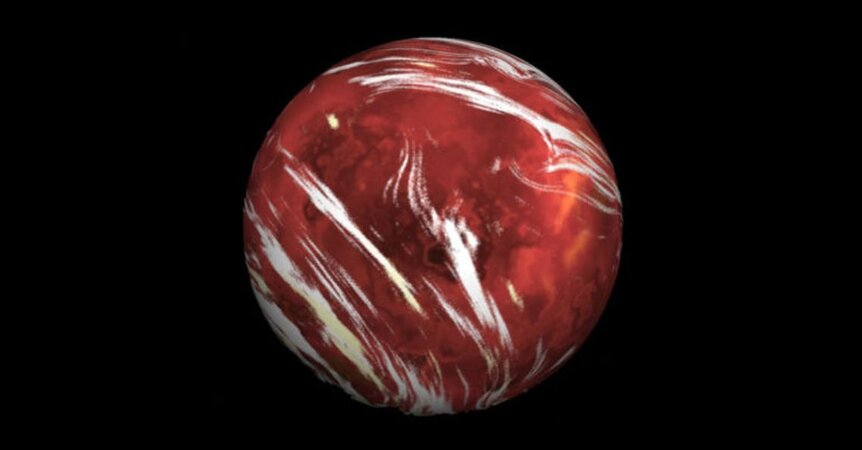Create a free profile to get unlimited access to exclusive videos, sweepstakes, and more!
This newly discovered exoplanet is tantalizingly close to Earth... well, relatively speaking

It might be a bit early to start packing your suitcase to relocate to a nearby habitable planet, but if your lifeclock holds out long enough, you might be a chosen passenger on a flight to this steamy, newly discovered super-Earth located just 90 light years from Earth. Granted, even though that's just a hop, skip, and a jump in the vast realm of interstellar distances, that still calculates out to a whopping 540 trillion miles!
Eagle-eyed astronomers from Penn State University recently discovered this potential Goldilocks planet, officially catalogued as G 9-40b (shown below), that's estimated to be more than twice the size of our Big Blue Marble and possibly even as large as the gas giant, Neptune.
The generically named G 9-40b was initially spotted by Kepler, NASA’s planet-hunting space telescope, during its K2 mission last year. But before you get too excited, you better bring along some 10,000 SPF sunscreen and a large water bottle, because the surface of this world is a toasty 5,600 degrees Fahrenheit!
According to Gudmundur Stefansson, lead study author of a research paper published this month in The Astronomical Journal, it's “among the 20 closest transiting planetary systems known, and is currently the second closest transiting planet discovered by the K2 mission to date.”
The planet's large transit depth, matched with the closeness and brightness of its M-type host star makes G 9-40b one of the most encouraging sub-Neptune-sized planets orbiting a Red Dwarf for successful transmission spectroscopy, with not only ARIEL — the ESA's Atmospheric Remote-sensing Infrared Exoplanet Large-survey — dedicated to investigating the atmospheres of exoplanets starting in 2028, but also the upcoming ground-based Extremely Large Telescopes currently under construction around the world.
By employing The Habitable Zone Planet Finder (HPF), a low-mass planet-hunting instrument equipped on the 10-meter Hobby-Eberly Telescope at the McDonald Observatory in Texas, the team now believes that while it might not be exactly conducive to human colonization, G 9-40b could be worth a closer peek by NASA’s James Webb Space Telescope scheduled to blast off in March of 2021.




























